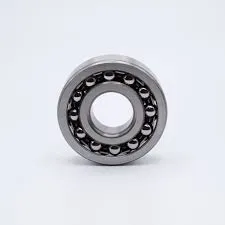
Dec . 04, 2024 11:36 Back to list
Understanding the Functionality and Applications of Axial Ball Bearings in Machinery
The Importance of Axial Ball Bearings in Modern Engineering
Axial ball bearings are critical components in various machinery and equipment, playing a vital role in ensuring smooth and efficient operation. Unlike conventional radial bearings, which are designed to bear loads primarily in a radial direction, axial ball bearings are specifically engineered to accommodate axial loads—those parallel to the shaft. This unique characteristic makes them an invaluable asset in numerous applications, from automotive to aerospace industries.
Design and Functionality
Axial ball bearings consist of two main components the inner and outer rings, along with ball elements that sit between them. The balls are arranged in such a manner that they allow the bearing to withstand substantial axial loads without a significant increase in friction. The design is typically compact, providing a reliable solution for applications where space is limited.
One of the primary advantages of axial ball bearings is their ability to handle thrust loads, making them ideal for situations where force is applied along the axis of the shaft. For example, in electric motors, axial ball bearings support the rotor and ensure smooth rotation while minimizing energy loss. This efficiency is crucial in applications requiring precision and reliability.
Applications in Various Industries
Axial ball bearings are prevalent across multiple industries due to their versatility and robustness. In the automotive industry, these bearings are used in gearboxes, clutches, and steering columns. They facilitate smooth operation while contributing to the overall performance of vehicles. The aerospace sector also heavily relies on axial ball bearings, especially in landing gear assemblies, where they must withstand extreme forces while ensuring safety and reliability.
In the manufacturing sector, these bearings are used in conveyor systems and machinery where linear movement is common. Their ability to support axial loads allows machinery to operate efficiently, reducing wear and tear on components and prolonging the lifespan of the equipment.
Key Benefits
The use of axial ball bearings provides several benefits that contribute to enhanced performance and efficiency in various applications
axial ball bearing

1. High Load Capacity Axial ball bearings can support significant axial loads, providing stability even under heavy operating conditions. This characteristic is essential for ensuring the longevity of machinery and reducing maintenance costs.
2. Reduced Friction The design of axial ball bearings minimizes friction between moving parts, which translates to improved efficiency. Lower friction also means less heat generation, promoting cooler operation and reducing the risk of overheating.
3. Compact Size The compact nature of axial ball bearings allows for their integration into tight spaces where traditional bearing designs may not fit. This makes them an excellent choice for modern engineering designs that prioritize space efficiency.
4. Simple Installation and Maintenance Axial ball bearings are generally easy to install and require minimal maintenance, making them a convenient choice for manufacturers and operators alike.
Challenges and Considerations
While axial ball bearings offer numerous advantages, they also come with certain challenges. Proper alignment is crucial to ensure optimal performance; misalignment can lead to uneven wear or failure. Additionally, the choice of materials and lubrication systems can significantly impact the bearing's performance and lifespan.
Engineers and designers must consider these factors when selecting axial ball bearings for specific applications. Ensuring proper maintenance and monitoring can help mitigate potential issues and prolong the life of the bearings.
Conclusion
Axial ball bearings are essential components in modern engineering, offering a reliable solution for handling axial loads in various applications. Their unique design, combined with their ability to reduce friction and support heavy loads, makes them invaluable in industries ranging from automotive to aerospace. As technology continues to advance, the demand for efficient and reliable bearings will only increase, highlighting the importance of axial ball bearings in the future of engineering. Proper selection, installation, and maintenance can further enhance their performance, allowing industries to leverage the benefits of these crucial components.
Latest news
-
Grooved Ball Bearing Design and Functionality
NewsJun.04,2025
-
Concrete Mixer Bearing Load Capacity Testing
NewsJun.04,2025
-
6004 Bearing Dimensions in Robotic Joint Designs
NewsJun.04,2025
-
Advantages of Single-Row Deep Groove Ball Bearings
NewsJun.04,2025
-
Applications of Deep Groove Ball Bearings in Automotive Systems
NewsJun.04,2025
-
Innovations in Bearing Pressing Machine Design
NewsJun.04,2025
